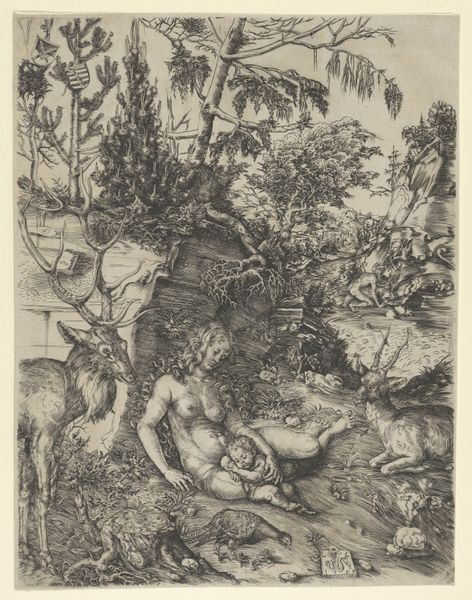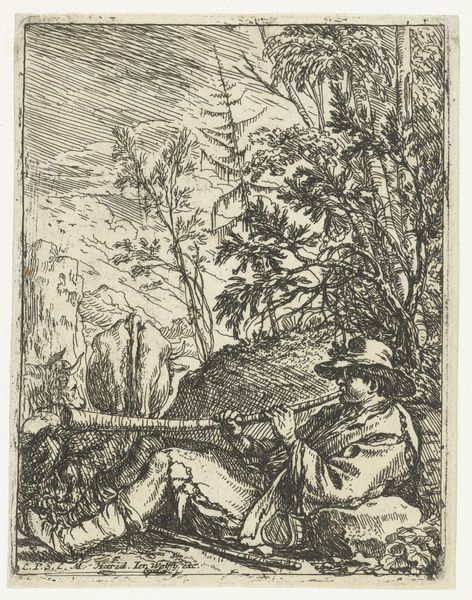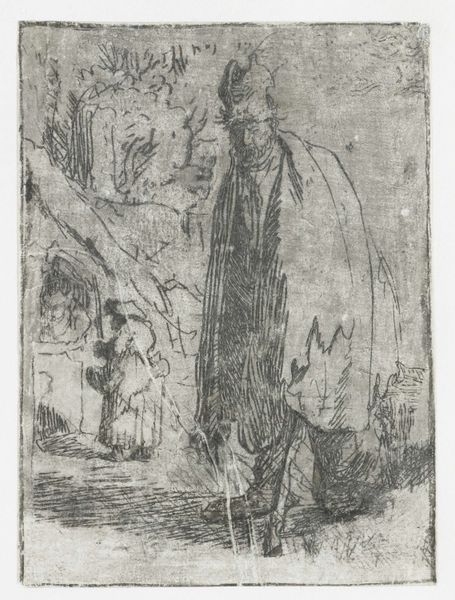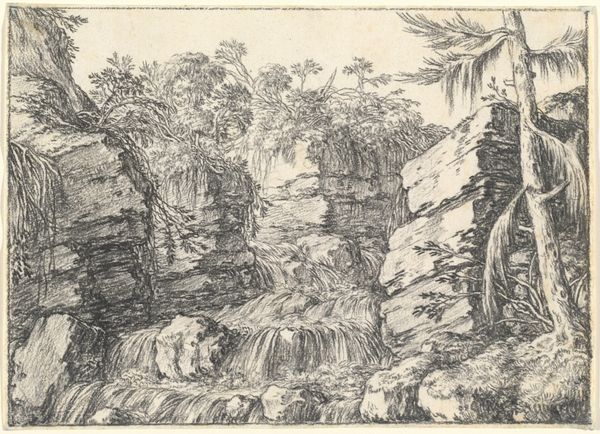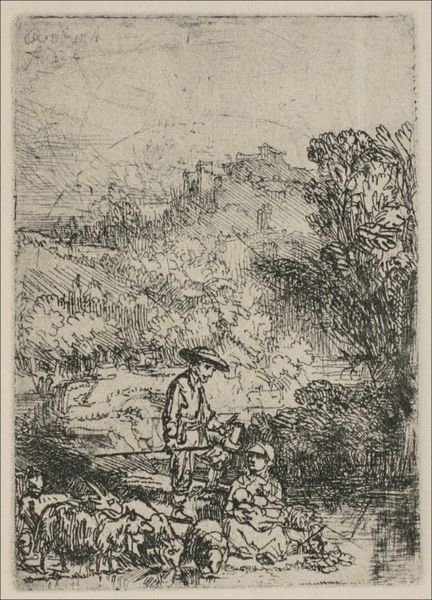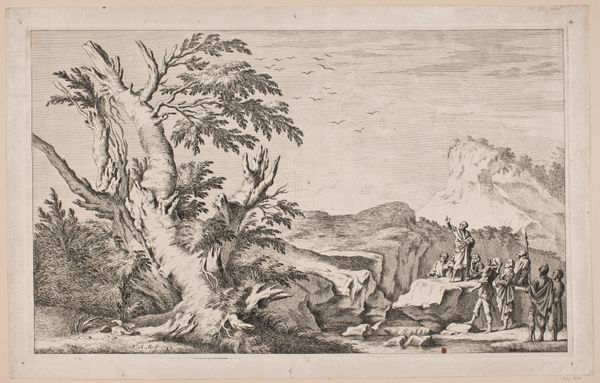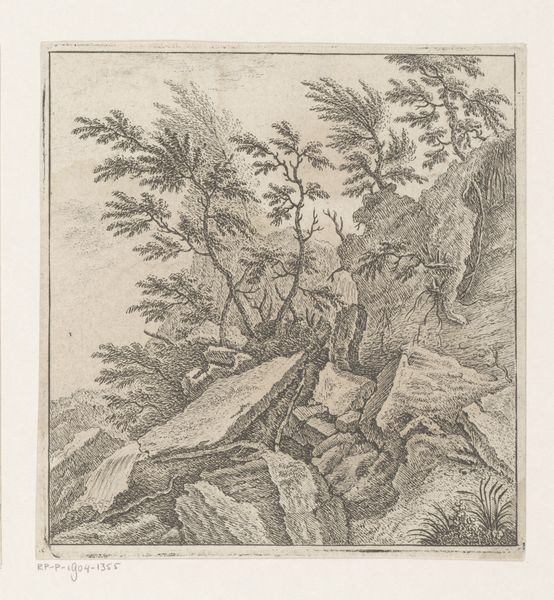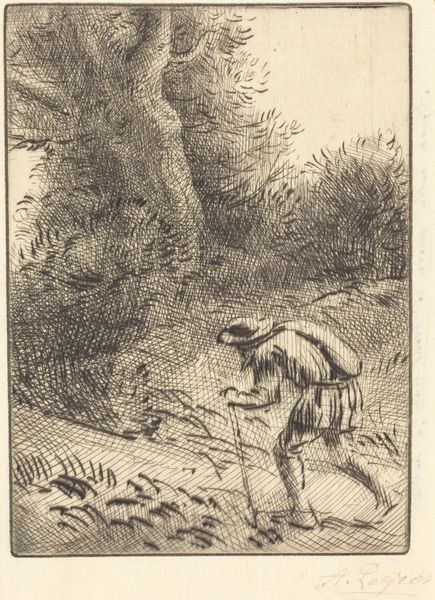
drawing, print, paper, ink, engraving
#
drawing
# print
#
landscape
#
figuration
#
paper
#
ink
#
genre-painting
#
northern-renaissance
#
engraving
Copyright: National Gallery of Art: CC0 1.0
Sebald Beham etched Saint Jerome in a Landscape in 1520. The image presents Saint Jerome, a scholar of the church, in the wilderness, with a stark landscape and a towering tree dominating the composition. The landscape is not merely a backdrop but a reflection of Jerome's spiritual journey. The wilderness, often a symbol of isolation and testing, becomes a space for contemplation and divine connection. This mirrors the motifs of earlier desert fathers, figures who, like Jerome, sought enlightenment through solitude. Consider the iconography of the tree, a recurring image from the Tree of Knowledge to the Tree of Life. It is a symbol deeply embedded in our collective consciousness and an enduring motif of growth, transformation, and the connection between heaven and earth. Such symbols are cultural touchstones that persist through time, carrying layers of meaning that engage our subconscious on a profound level. They serve as a potent reminder of the cyclical nature of human experience. Each era may reinterpret these motifs, yet they remain tethered to the primordial narratives that continue to resonate within us.
Comments
No comments
Be the first to comment and join the conversation on the ultimate creative platform.

